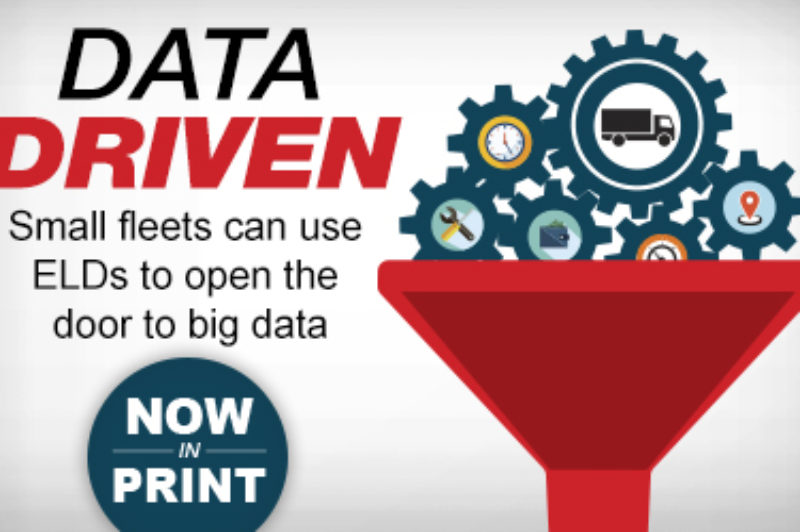telematics

Data Driven: ELD’s can open door to big data
If knowledge is power, then Electronic Logging Devices (ELD) could be the most powerful device on the truck. Sure, the device at its most basic is responsible only for monitoring hours of service, but the potential of networking and integrating data is impossible to ignore. Why settle for simple electronic logging when it can serve as a total fleet management solution in a box? A friend of mine drives for a 10-truck floral distribution company and makes regular runs from Ontario's Niagara region to Chicago, Michigan, and western New Jersey. The picture he paints of his distribution manager would be amusing if it were not (most likely) true. The manager must be a fellow who grew up trucking in the '60s, and still listens to eight-track tapes of Red Sovine and Dave Dudley. The routes are badly planned, trucks are frequently diverted en route, the vehicles are always breaking down, and all communication with drivers is done over the -telephone. And he doesn't believe in ELDs. My friend says his boss will wait until the last possible moment to equip his fleet - and then only because he must.
Omadi, TomTom join forces to improve towing experience
SILICON SLOPES, UT - Towing software provider Omadi and telematics solution provider TomTom Telematics have announced they've joined forces in the U.S. to improve towing efficiencies. This alliance will enhance current integration by providing customers easy access to both the Omadi software platform and TomTom's fleet management software TomTom WEBFLEET.

The possibility — and limits — of remote diagnostics
MONTREAL, QC - Manufacturers are more closely connected to individual engines than ever before. Telematics make it possible to monitor fault codes in real time, inform vehicle owners of the problems, and even identify service locations that stock the required parts. Stephane Godbout, the president of SG Consulting, just wants more. He understands the value of data, having worked for a fleet that adopted Detroit Technician in more than 500 trucks as early as 2012. "It was a lot of data to start out with," Godbout recalled during the SCEF maintenance summit in Montreal. "We had to scale back because our people were swamped with data. They didn't know what to do with it."

